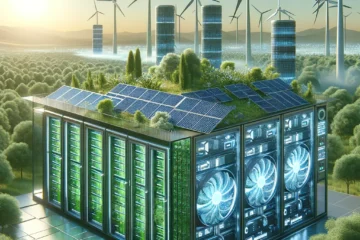As humanity strides forward to combat the challenges posed by climate change, green energy emerges as a critical component in the global energy transition. At the forefront of this revolution is nanotechnology, a field that manipulates matter at the molecular and atomic levels to create materials with remarkably altered physical, chemical, and biological properties. This article delves into the transformative role nanotech plays in powering the future of green energy, analyzing its impact on renewable sources, enhancements in efficiency, and its pivotal part in sustainable global growth.
Nanotech Essentials: An Overview
Nanotechnology involves the engineering of functional systems at the nanoscale, which spans from one to a few hundred nanometers. At this scale, materials exhibit unique properties that can be significantly different from their macroscale counterparts. This is due to the increased surface area to volume ratio and the dominance of quantum effects. Nanotech has the potential to revolutionize various industries, including medicine, electronics, and energy. In the context of green energy, the application of nanotechnology promises to refine energy conversion, storage, and efficiency, setting the stage for a more sustainable and resilient energy landscape.
Revolutionizing Renewable Energy Sources
Renewable energy sources such as solar, wind, and hydroelectric power are vital in the transition to a sustainable energy future. Nanotech is poised to revolutionize these sources by enabling the development of new materials and processes that enhance their performance and reduce costs. For instance, nanostructured materials can be designed to capture more sunlight or to create more efficient wind turbine blades. By improving the conversion efficiencies and reducing the material usage, nanotechnology can make renewable energy sources more competitive compared to traditional fossil fuels, thus accelerating their adoption.
Enhancing Solar Cell Efficiency with Nanotech
A prime example of nanotech’s impact on green energy is its role in enhancing solar cell efficiency. Nanotechnology enables the design of solar panels with nanostructured layers that can trap sunlight more effectively, reducing reflection and increasing absorption. Innovations such as quantum dots and plasmonic nanoparticles can be introduced into solar cells to tap into a broader spectrum of solar radiation, thereby increasing their power conversion efficiencies. As a result, solar panels become less costly, more efficient, and a more viable option for widespread use in a variety of settings.
Nanomaterials in Wind Energy Applications
Wind energy is another beneficiary of nanotechnological advancements. The application of nanomaterials in the production of wind turbine components can lead to lighter, stronger, and more durable structures. For example, carbon nanotubes and graphene can be used to reinforce blades, making them less susceptible to wear and enhancing their aerodynamic properties. Nanocoatings can also be applied to protect against environmental damage, reducing maintenance costs and extending the lifespan of wind turbines. These improvements contribute to a decrease in the cost per kilowatt-hour of wind energy, bolstering its competitiveness.
Nano-Enabled Energy Storage Solutions
Effective energy storage is a critical element for the integration of renewable energy into the grid. Nanotechnology can dramatically improve the performance of batteries and supercapacitors, which are essential for storing energy from intermittent sources like solar and wind. Nano-engineered materials within these storage solutions offer higher energy and power densities, faster charging times, and longer life cycles. By enhancing the capabilities of energy storage devices, nanotech ensures a more stable and reliable supply of green energy, facilitating a smoother transition away from fossil fuel dependence.
The Future: Nanotech in Sustainable Growth
The future of sustainable growth is inextricably linked to the advancements made possible by nanotechnology. This multidisciplinary field is set to play a pivotal role in mitigating environmental impacts and driving the efficiency of green technologies to new heights. As research and development continue, one can expect to see nanotech solutions that further reduce the cost of renewable energy, introduce groundbreaking energy storage systems, and create smart materials that adapt to environmental changes. Embracing the potential of nanotechnology in the energy sector is key to achieving a sustainable future that is both energy-secure and environmentally responsible.
In conclusion, nanotechnology stands as a cornerstone in the evolution of green energy, offering innovative solutions that can reshape the global energy paradigm. By enhancing the efficiency of renewable energy sources, advancing storage technologies, and driving down costs, nanotech paves the way for a more sustainable and eco-friendly future. As we continue to explore the boundless possibilities of this microscopic realm, the promise of a cleaner, greener, and more energy-efficient world becomes ever more tangible.




